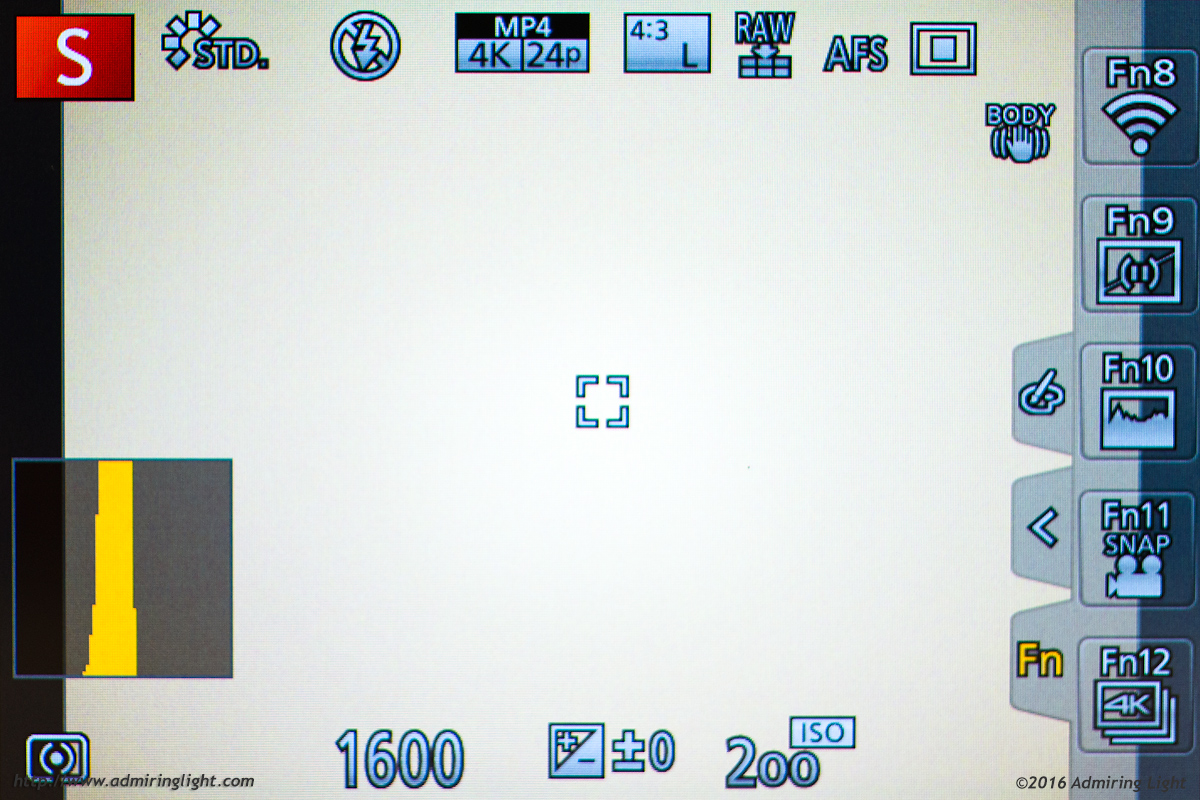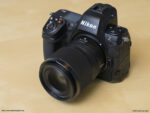Viewfinder and Rear Screen
The viewfinder on the GX7 was quite good, but it was a 16:9 panel, such that the camera displayed a cropped, smaller view when shooting at full resolution in still photo modes. Thankfully, the GX8 has moved to a 4:3 panel, and the resulting EVF is phenomenal. The 2.36 million dot EVF is bright, crisp and clear, and the generous 0.77x magnification is among the largest of any mirrorless camera. Due to the clear optics and bright display, it looks even better than the EVFs on the Fuji X-T1 and A7R II; it’s the best EVF on any camera I’ve reviewed. Well done, Panasonic.
The viewfinder also retains the 90 degree tilting capability first featured on the GX7, to enable the EVF to be used while looking down. It’s a neat feature, but to be honest, I never found a use for it. When shooting low to the ground, I find the articulating LCD to be of far greater value.

The rear touch screen is similarly bright and clear, and unlike the GX7, it’s fully articulating. I have a love/hate relationship with articulating screens, as I love them for vertical shooting and dislike them for horizontal shooting, preferring a tilt screen when shooting at waist level. However, all things considered, the full articulation gets the nod for added versatility, and so it’s nice to see it implemented here. The touch response on the screen is very good, and Panasonic incorporates it into the interface of the camera, which you can choose to fully embrace or ignore as your preferences dictate.
Like the OM-D E-M10 Mark II I reviewed last month, the Panasonic GX8 has the ability to utilize the touch screen while using the EVF as a means to adjust focus point. I liked this feature on the E-M10 II and it’s a great feature here that adds some extra versatility.
Autofocus and Performance
Panasonic has always had excellent autofocus capabilities in single shot mode, and this continues with the GX8. Panasonic always seems to add subtle tweaks to the AF algorithms and at this point, in single shot mode with a fast lens, focus is essentially instantaneous. With a lens like the 25mm f/1.7, I was seeing and hearing focus confirmation simultaneously with completing the shutter half-press: it’s that fast. For the most part, the camera is exceedingly accurate as well. If shooting in single AF mode, you will have a hard time finding a camera that focuses faster.
When light levels drop, AF still keeps on going, though I found that there were occasional time when the algorithm would interpret a defined edge from a bokeh ball as being in focus, and therefore ‘lock’ focus when the lens was completely out of focus. Overall, though, the GX8 continues the great single shot AF performance that you expect from the Lumix cameras.

The GX8 also gains Panasonic’s Depth From Defocus continuous focus algorithm that first appeared on the flagship GH4. This technology is used in lieu of dedicated phase detect autofocus points, and it works surprisingly well. Tracking moving people coming towards the camera, even at moderate speeds, is met with a very high hit rate even at the maximum 6fps burst rate that allows continuous AF. Even fast-moving vehicles yielded an in-focus rate greater than 50%. The GX8 is definitely a camera that can keep up with moving kids, some low-intensity sports action and even the occasional fast sports action. However, the downside to this technology is that the AF doesn’t look like it’s tracking in the viewfinder. During a test where I had a subject walk briskly towards me, it appeared in the viewfinder that every photo would be out of focus, as the lens rapidly searched for its target. However, when reviewing the images, nearly 9 out of every 10 shots was in perfect focus. This behavior may be distracting when shooting sports.
Performance wise, the GX8 is a quick camera. Startup is nice and snappy and shot to shot times are excellent. I was never waiting on the camera. The GX8 can shoot at 8 frames per second (with fixed focus) with the mechanical shutter or 10 frames per second at full resolution with the electronic shutter, though you likely won’t want to use the electronic shutter for capturing action due to the potential for rolling shutter artifacts. There’s also the 4K Photo mode, which I’ll get into in the next section, that allows for shooting bursts of 4K video with easy 8 megapixel frame extraction to capture just the right moment.
The GX8 lacks a built-in pop-up flash in favor of some extra dials, but in the tests with my Metz 50 AF-1 flash, the GX8 metered flash exposures well, with flash exposure compensation really only needed when the tonality of the subject was strongly biased light or dark.





Leave a Reply